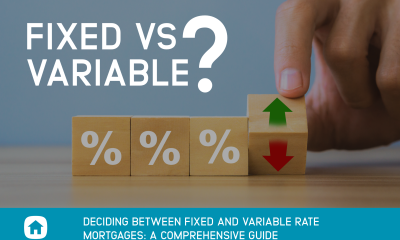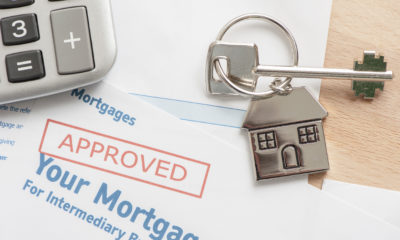What Happens to My HELOC When I Sell My Home?
In today’s era of ultra-low interest rates, Canadians haven’t hesitated when loading up the liabilities side of their balance sheets. Car loans, lines of credit, and credit card debt are all on the rise, and a full one-third of Canadians have a home equity line of credit (HELOC).
But just what is a HELOC? How do you use it, and, more importantly, what happens to it when it’s time to sell your home?
In today’s blog post we’re going to explain the ins and outs of your HELOC and explain why these low-interest credit tools need to be used wisely.
What is a HELOC?
HELOC stands for home equity line of credit. This type of credit is a secured line of credit because you are using your home as collateral to secure the debt. A HELOC typically has a lower interest rate than a traditional or unsecured line of credit, which is one of the major reasons HELOCs have become so popular. HELOCs can often be obtained with interest rates as low as the prime rate plus one percentage point, whereas unsecured lines of credit have interest rates several percentage points higher.
HELOCs are a revolving credit tool. Another example of a revolving credit tool is a credit card. With this type of credit, you borrow money, pay it back, and borrow it again, up to a certain credit limit. You only pay interest on the money you borrow, and you are free to go long periods without borrowing any money at all. There are two primary types of HELOCs, those that are combined with your mortgage, and those that aren’t.
Combined HELOCs are offered by major lenders and combines a fixed term mortgage and HELOC as a single product. Your mortgage will be a fixed payment that you pay monthly, and your HELOC will be available for you to use as needed.
Many Canadians prefer to shop around for the best mortgage rate and choose a smaller lender that better suits their needs. In this case, the smaller lender may not offer a combined HELOC product.
If this is the case, you can still apply for a stand-alone HELOC. A stand-alone HELOC is still secured by your home, but it’s not related to your mortgage. You can apply for a stand-alone HELOC with any lender who offers one, and you do not have to have your mortgage at the same institution.
Your HELOC can have a credit limit up to 65% of your home’s value, but you can only borrow a combined 80% of your home’s equity between your mortgage and your HELOC together.
Why use a HELOC?
Canadians obtain home equity lines of credit for many different reasons. Some use their HELOCs to finance equity building activities like renovations or purchasing an income property. Others use the money to help children get started in life, travel the world, or consolidate debt. Others keep a HELOC has a low-interest emergency fund, and never touch the available credit except in emergencies.
What happens when you sell your home?
Ideally, you would only use your HELOC when necessary and pay back the balance promptly. Unfortunately, this is seldom the case. Many Canadians use their HELOCs as a piggy bank to finance their lifestyles, and about 40% do not pay back their HELOCs regularly, according to a June 2017 report by the Financial Consumer Agency of Canada. The average balance of the 3 million HELOCs available in Canada? $70,000.
There are two scenarios when an outstanding HELOC balance hinders your finances. The first is if you plan to transfer your mortgage to another lender when your term expires and your mortgage renews. If you have a combined HELOC and mortgage (sometimes called a collateral mortgage), you may need to pay off your HELOC in full before you can transfer your mortgage, and you may need to pay extra fees to make the switch.
The second scenario is if you plan to sell your home. You’ve used your home as collateral for your HELOC, and your lender has legal rights to that property. You cannot close on your home’s sale without paying back your HELOC. Typically, your lender will be comfortable with you repaying your HELOC from the profits of your home’s sale, but this varies from lender to lender, so it’s important to very carefully review your HELOC agreement before you sign it.
There is one instance where owing a significant balance on your HELOC could hinder your home’s sale, and that is if you sell it for less than you owe. Canada’s real estate market, it is rare to sell a home for less than its original sale price, but it does happen. If this is the case, you may have what is called “negative equity,” and you’ll need to use your savings to cover the cost difference. If you don’t have enough savings to cover the outstanding balance, you may need to obtain an unsecured line of credit to pay off your HELOC.
HELOCs can be a valuable tool to help you grow your home equity through renovations or additional property purchases, or it can be a way to ensure you stay in debt for many years. Make sure you use the power your HELOC wisely and contact a ClearHome mortgage specialist if you’re unsure of your options.

 Buying a Home5 years ago
Buying a Home5 years ago
 Business4 years ago
Business4 years ago
 5 Mortgage Secrets7 years ago
5 Mortgage Secrets7 years ago
 Buying a Home6 years ago
Buying a Home6 years ago
 5 Mortgage Secrets6 years ago
5 Mortgage Secrets6 years ago
 News12 months ago
News12 months ago
 Business4 years ago
Business4 years ago
 Buying a Home6 years ago
Buying a Home6 years ago





